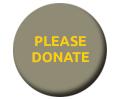NZ contributes to global report on Indigenous and tribal peoples
NEWS RELEASES: University of Otago, 21 April 2016
A world-first study into the health and wellbeing of more than 154 million Indigenous and tribal peoples globally was launched today simultaneously in Melbourne and London, by Australia’s Lowitja Institute and the Lancet journal.
 Bridget Robson, Associate Dean Māori from the University of Otago, Wellington, was one of the authors and provides a New Zealand perspective.
Bridget Robson, Associate Dean Māori from the University of Otago, Wellington, was one of the authors and provides a New Zealand perspective.
Ms Robson says that New Zealand has arguably the most robust data on the health of our Indigenous population in the world. Some countries, such as Sweden and Norway, have sophisticated data systems, but have not collected ethnicity data since World War II which makes it difficult to monitor the health of their Indigenous populations, the Sami peoples.
She notes that the report provides data on 28 indigenous and non-indigenous populations in 23 countries – a more comprehensive range than is usually reported. It includes Indigenous peoples from Africa, Pakistan, India, Nepal, China, Thailand, Myanmar, the Americas, Scandinavia, Circumpolar Russia, Greenland, Hawaii, Australia and New Zealand.
The indicators cover health, education and low economic status and the study focuses on differences between Indigenous and non-indigenous populations within the countries, rather than trying to compare between countries.
“Although this study was unable to report trends over time, some equity indicators for Māori are improving in New Zealand. These include infant mortality, life expectancy at birth, and education attainment,” says Ms Robson.
“New Zealand has developed high quality ethnicity data in its national health surveillance system over the past two decades, crucial for monitoring the right to health for Māori and Treaty of Waitangi obligations.
“This must be vigilantly maintained. The next steps include developing data systems that support iwi and hapū to monitor health and social outcomes for their own people and rohe, incorporating Māori values and concepts of health and wellbeing,” she says.
Ms Robson notes the following points about the study:
- Maternal mortality in New Zealand is low compared to that of many countries in our study, but Māori women have twice the risk of non-Māori. Low birth weight rates are higher for Māori but the gap is relatively small (a difference of 1.1 per 1000 live births).
- Māori are twice as likely as non-Māori to live in low-income households, a key social determinant of health.
- The study shows evidence of poorer health and social outcomes for many Indigenous and non-Indigenous populations, demonstrating the need for governments to develop tailored policy responses to Indigenous health. However, the patterns are not uniform. In Myanmar, for example, the Mon people are better off in three indicators.
The report also makes specific recommendations for strengthening health systems to meet the unique needs of these communities. The report says that closing the economic, societal and health gaps for Indigenous people starts with increasing visibility, implementing targeted programmes and promoting self-determination. The comprehensive report has been a major two-year undertaking. It contains data from 154 million Indigenous people in 23 countries around the world. This represents 50% of the global Indigenous population.



